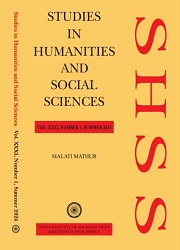AUM, the Pranava and Human Consciousness in Mandukya Upanishad, Yoga Sutra, and Vijnanabhairava Tantra
Keywords:
Consciousness, AUM, Mandukya Upanisad, Yoga Sutra, Siva Sutra, Vijnanabhairava TantraAbstract
This paper reveals the exegetical framework of AUM that correlates the mantra and its syllables A-U-M with states of human consciousness as well as with Supreme Consciousness. We shall examine Mandukya Upanisad, Patanjali's Yoga Sutra, and the Vijnanabhairava Tantra to explore how these texts reveal that the sound and syllables of AUM help us to understand the connection between human and cosmic paradigms. More importantly, we would see how the description of AUM in these texts forms an experiential gateway to reach the realm in which that Supreme Reality unfolds within our own consciousness. Patanjali's Yoga Sutra famously declares AUM to be the denotation of Supreme Reality (Purusa).The four states of human consciousnessthree of Jagrat, Svapna and Susupti and the fourth Turiya- described in the ancient Mandukya Upanisad become the foundation for a fifth state called Turiyatita (beyond Turiya) in the Kashmir Saiva texts of Siva Sutra (9th century) and the VijnanabhairavaTantra (8th century).



